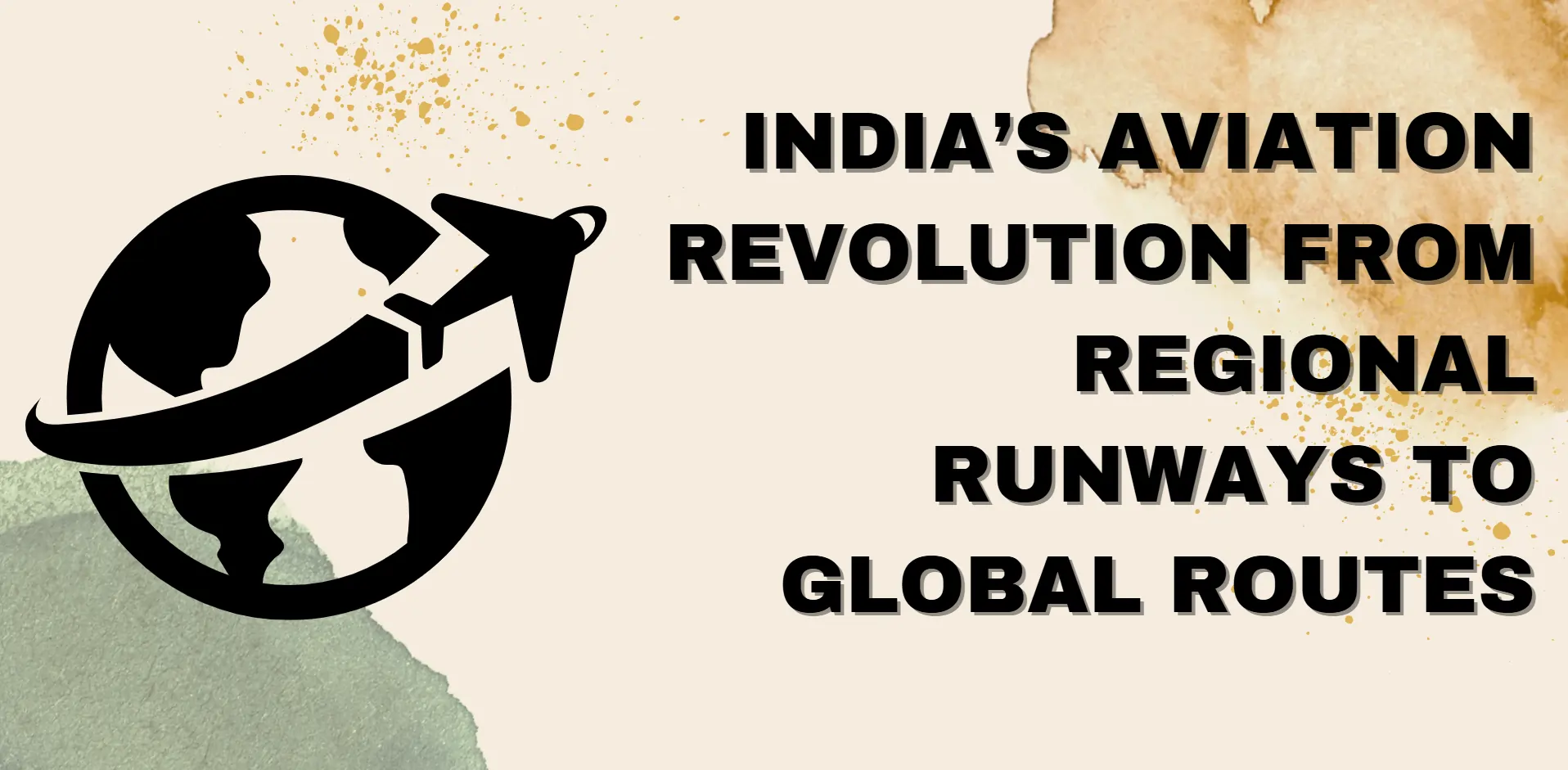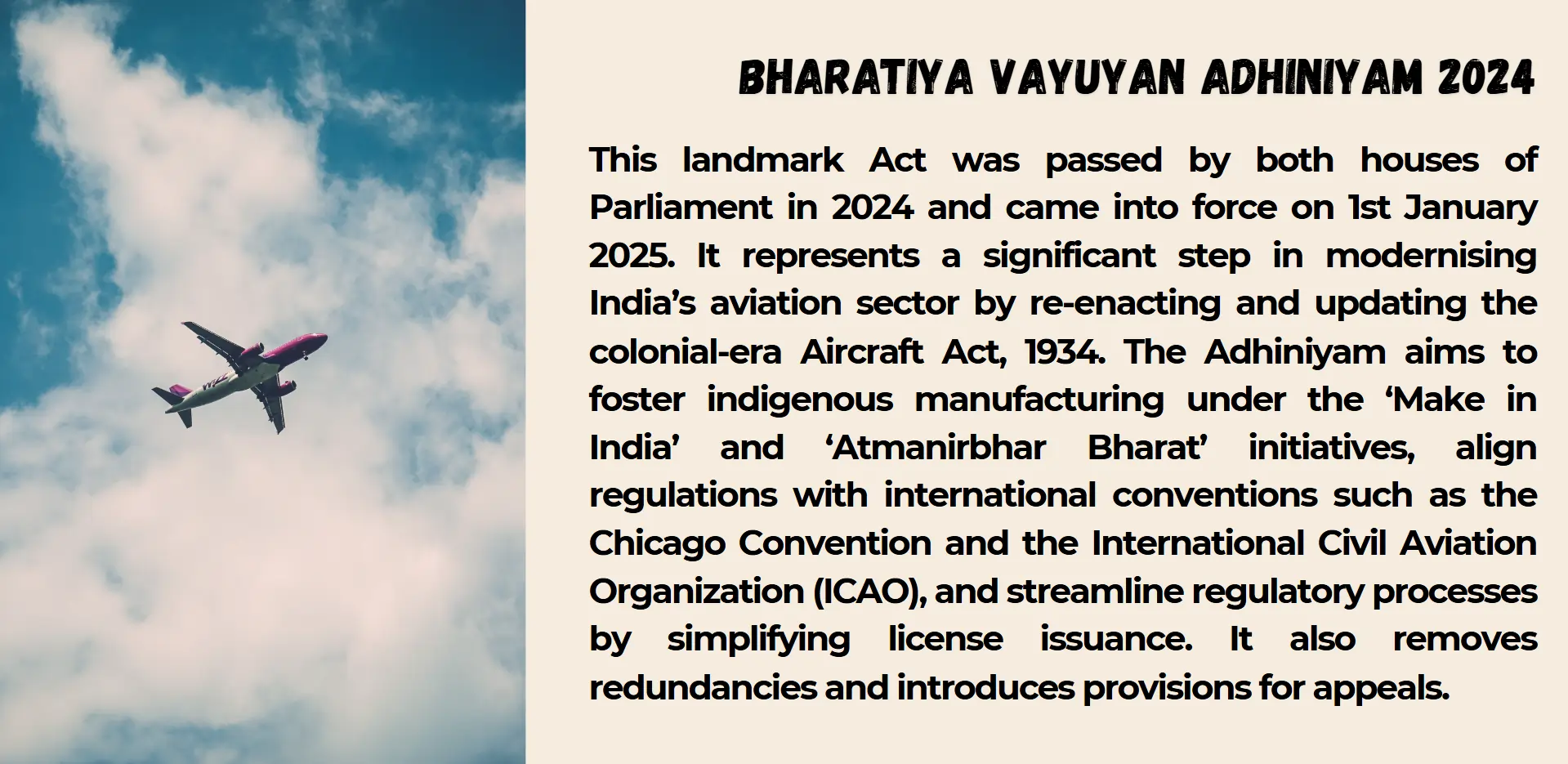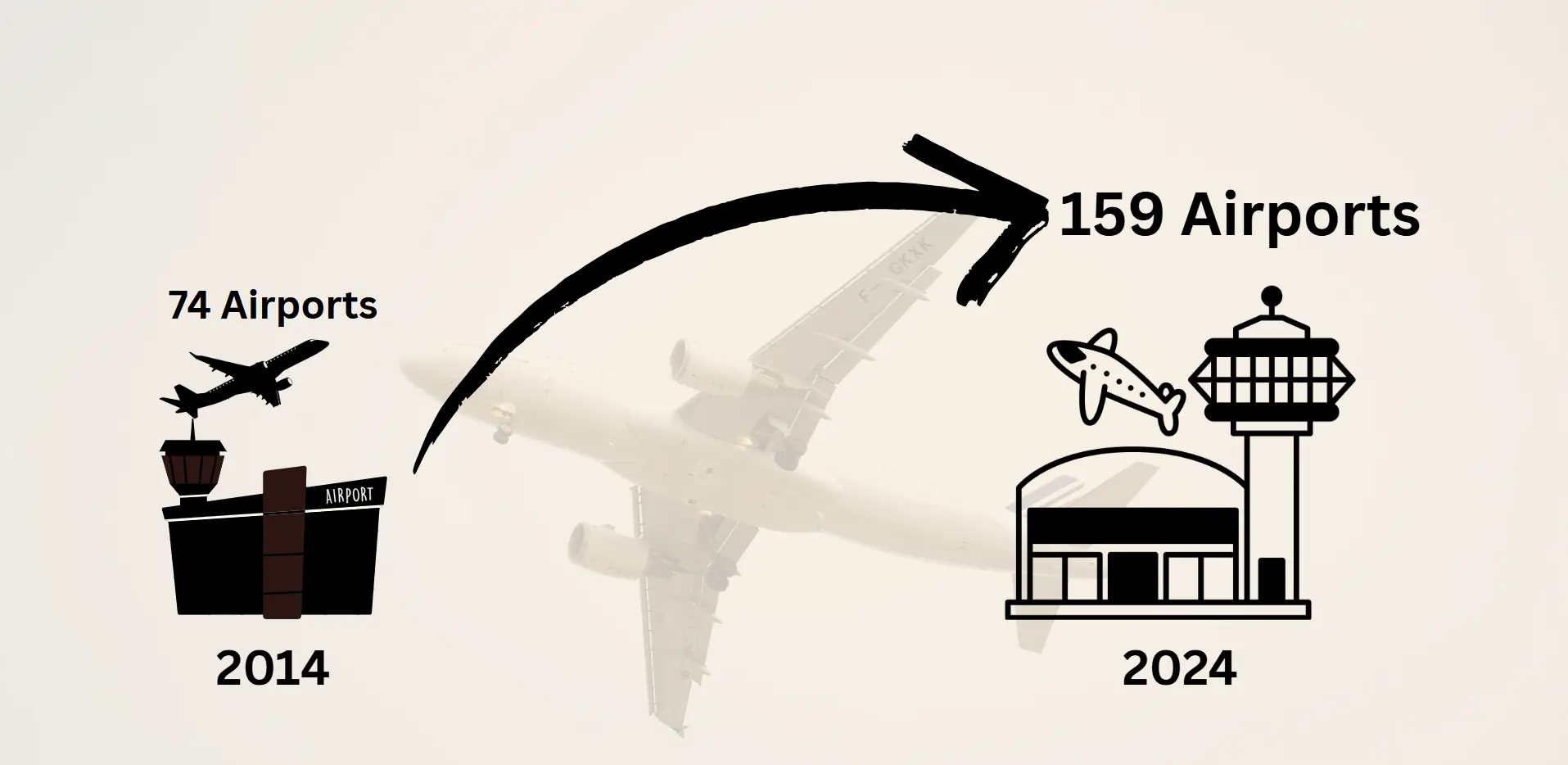The modern Indian aviation sector has developed from domestic flying routes into worldwide connectivity because of privatizations combined with policy changes and inexpensive airlines and expanded facilities as well as national ambitions.

The aviation industry in India has experienced a major shift throughout several decades which transformed regional flight operations into a strong global marketplace. The aviation sector went through substantial changes after liberalization because private carriers entered the market alongside vital policy reforms which overcame the previous state-centric control and infrastructure issues. The entry of budget carriers combined with regional connectivity programs made flying less expensive and allowed previously unreachable locations to enter aviation routes. The nation developed greater international ambitions that required expanded airline routes and multiple partnerships with airline companies from around the world. India promotes growth in global aviation through modernized airports and increased passenger demand supported by technological progress. Despite positive developments several existing problems amounting to infrastructure deficiencies and administrative barriers along with environmental sustainability issues must remain priority areas for resolution. This Article examines how India transformed its aviation operations from local airstrips to worldwide leadership alongside predictions about the upcoming market developments.
The Early Days of Indian Aviation
The beginning of aircraft flight operations across India began during the early 20th century to create a future framework for air transportation. During its original state the sector adopted small aircraft that served restricted routes before increasing its capacity to support both domestic and international operations.
The First Flight and Aviation Pioneers
On February 18, 1911 India launched its first commercial airmail flight which departed from Allahabad for Naini. Air transport engagement started in India through this essential historical occasion. J.R.D. Tata along with industrialists and aviators played the key role in driving industry growth as Tata Airlines became India's first commercial airline in 1932.
Early Challenges and State Intervention
The aviation industry faced limited expansion because it lacked proper facilities and regulations blocked its development. The number of airports was minimal throughout that period while air travel reserved itself for privileged social classes. The government took action to develop the sector through nationalization that created Air India for overseas operations alongside Indian Airlines for domestic routes from Tata Airlines.
The Role of Air India and Global Aspirations
J.R.D. Tata as leader of Air India expanded the airline worldwide which positioned India as a rising aviation force worldwide. Through luxurious service offerings as well as famous branding and purposeful route development Air India achieved international recognition. Domestic aviation faced barriers in development due to insufficient competition and bureaucratic obstacles in addition to government processes that managed the industry.
Laying the Groundwork for Transformation
The beginnings of Indian aviation experienced both pursuit of goals and multiple barriers in their development. The basic structure of the industry became established due to pioneering developments and government intervention yet essential reforms and modernization awaited implementation. The foundation established during this phase helped develop India's future aviation revolution which delivered greater worldwide accessibility.
Liberalization and Policy Reforms
The aviation industry of India experienced a complete overhaul after the early 1990s liberalization and policy reform measures. The implemented changes enabled competitive environments and enhanced infrastructure growth which led to India's increasing integration with international aviation.
The Impact of Economic Liberalization
When India adopted economic liberalization policies during 1991 the aviation industry begun accepting private airline companies because state-owned airlines lost their monopoly power. Fast sectorial expansion became possible through both foreign investment promotion and regulatory barrier diminishing efforts by the government.
Entry of Private Airlines and Market Growth
The new private businesses including Jet Airways, IndiGo as well as SpiceJet entered the market which resulted in better aircraft service levels and lower ticket prices for consumers. Budget airlines broke down air transportation barriers to give broader access to flying thus fuelling higher passenger numbers while building new travel networks.
Reforming aviation sector for sustainable growth
The Government designed open skies agreements as part of its strategy to back this industry expansion by letting more foreign airlines enter Indian airspace. Global investors entered the Indian market after the Foreign Direct Investment (FDI) cap rise which strengthened the business stability of Indian carriers.
Boosting Regional Connectivity and Infrastructure
Miles of underserved regions became more accessible due to the Government's UDAN scheme which offered subsidized flights for the general public. As part of their improvement initiatives key city airports received updates which allowed them to accommodate the growing air passenger volume.
Challenges in Policy Implementation
The industry encountered obstacles after reforms which included expensive aviation fuel as well as complicated taxation systems and regulatory hurdles. Smooth policies together with sustainable practices stood essential for achieving lasting industry achievements.
The Indian aviation environment transformed through liberalization policies which brought global expansion and enhanced local air travel capabilities. Future development of India into a global aviation hub depends on sustained investments together with smart strategic planning and updated policies.
Regional Connectivity and Growth in Domestic Air Travel
The domestic air travel within India has undergone substantial developments throughout recent years. The enhanced connectivity, affordable fares and new infrastructure developments have enabled several millions of people to use air travel and connect urban to rural areas.

The UDAN Scheme
In 2016 the UDAN (Ude Desh Ka Aam Nagrik) scheme started its operation to provide both affordable and accessible air travel to remote cities. The initiative provides financial support and premium benefits to airlines which resulted in starting flights to airports with low demand and shortened travel times while supporting regional economic growth.
The Rise of Budget Airlines
The domestic aviation industry developed rapidly because budget airlines such as IndiGo, SpiceJet and GoAir expanded their flights network. Affordable flight models together with operational efficiency and larger aircraft fleets have opened air transportation for a wider demographic which has led people to choose flying over rail and road transport.
Infrastructure Expansion
Rising passenger traffic prompted the government along with private investments to build up airport infrastructure. The growth of secondary airports in rural areas received modernization alongside the continuous expansion of FPSOs located in major metropolitan cities including Delhi, Mumbai and Bangalore.
Challenges in Domestic Aviation Growth
The industry continues facing on-going difficulties in maintaining cost-effectiveness as well as regulating air congestions and improving aviation protection standards. The development of domestic connectivity suffers from high aviation fuel costs and regulatory complexities and environmental concerns which need on-going policy evolution with new technological development.
Future Prospects of Domestic Air Travel
The Indian domestic aviation industry will experience on-going growth because of higher investments in regional connectivity systems, digital improvements and sustainable aviation operations. The global ranking of India's aviation sector as a leading force will increase because travellers choose air transport over other transportation modes.
India’s Global Aviation Aspirations
The aviation industry of India has transformed from its previous regional capability into a world-class international air travel force. The country advances its global aviation standing through expanding global airline routes together with strategic partnerships and policy implementation.

Expanding International Flight Routes
The expansion of Indian airlines has occurred through their continuous addition of new international flight routes toward major global cities. Three major airlines including Air India, IndiGo and Vistara increased their flight networks throughout North America, Europe and the Middle East as well as Southeast Asia to better serve Indian travellers and businesses.
Strategic Airline Partnerships and Code-sharing Agreements
Indian airlines reached their global competition goals through strategic alliances which provide partnership opportunities with major international carriers. The alliances generate connected trips that simplify journeys along with higher customer comfort and extended marketplace penetration. During the partnership between Air India and Star Alliance they achieved significant expansion of their international reach.
Privatization and Air India’s Global Competitiveness
The Air India privatization process assisted India to reach its goal of creating worldwide presence in aviation. New shareholders acquired the airline which led to modernization of the fleet and normalized services across operations. Such measures establish Air India as a globally competitive international premier airline through its direct battles against leading worldwide aviation organizations.
Infrastructure Developments Supporting Global Connectivity
The Indian airports which ranked at the top of activity such as Delhi, Mumbai and Bangalore strengthened their operational structures because international air traffic grew at an increasing rate. The strength of India's position as a global aviation hub increases through its enhanced terminal infrastructure, logistics management systems and operational technology development.
Challenges and Roadblocks
The successful advancements of the Indian aviation sector encounter multiple barriers that stand in the way of total market penetration. The aviation sector must surpass two main obstacles that involve restrictive regulations alongside inadequate infrastructure for the purpose of long-term development.
Infrastructure Bottlenecks and Airport Congestion
The rise in airline travel generates substantial problems for the existing airport infrastructure in India. Operating delays together with reduced efficiency in airport procedures occur due to airport congestion at Delhi, Mumbai and Bangalore. The existing airports face two major impediments from terminal facilities and runway capacity restrictions that demand continuous updates to resolve them.
High Operational Costs and Aviation Fuel Prices
Aircraft fuel expenses remain high which creates a major operational problem for Indian airlines since they represent 40% of their business costs. The Indian aviation industry suffers from higher fuel tax levels established by worldwide standards that diminish both air travel affordability and airline profitability.
Regulatory and Policy Constraints
Although the aviation industry received benefits from liberalization it encounters operational problems due to complicated regulatory policies. The Indian aviation sector encounters entry obstacles because strict licensing rules and slow bureaucratic procedures as well as fluctuating policy guidelines restrain both emerging startups and expanding existing airline networks.
Environmental Concerns and Sustainability Challenges
Fast-paced growth within aviation sector produces environmental sustainability issues and carbon emission problems. Indian aviation must implement environmentally friendly technologies as well as sustainable aviation fuels and advanced air traffic management systems to decrease their environmental impact.
Workforce and Skill Development Issues
The growing demands for qualified aviation personnel in India's expanding aviation sector match the continuous shortage of pilots, engineers and airport-related staff members. The shortage of skilled personnel requires aviation education to develop professional training with international cooperation to address this shortage.
The Future of Indian Aviation
The aviation industry of India expects transformative growth through technological innovations supported by the government and broader international connections. The aviation industry will develop significantly into a top international aviation hub because people continue to use air transportation.
Emerging Technologies and Digital Transformation
Recent developments through Artificial Intelligence (AI), automation technologies and data analytics systems have led to total transformation of the aviation industry. Technological developments create optimized aviation operational infrastructure through advanced systems which combine AI-based air traffic technology with smart ticketing solutions for enhanced safety regulations together with improved efficiency levels coupled with higher journey standards for passengers.
Sustainable Aviation and Green Initiatives
Indian aviation sector places greater importance on sustainability because citizens have become more aware of environmental issues. The airline industry allocates resources to obtain fuel-efficient aircraft, funds biological fuel production and operates carbon emission reduction schemes. The development of future sustainable waste management systems combined with environmentally-friendly airport layout solutions will support sustainable aviation operations.
Expanding Global Aviation Connectivity
India enhances its worldwide aviation relations through both route expansion and essential international cooperation agreements establishment. Better airline routes between Europe-America-Asia will boost international business travel and tourism that establishes India's international profile to the world.
Infrastructure Development and Smart Airports
The demand for rising air passenger volumes required essential airport expansion together with updated infrastructure upgrades. The transformation of Indian aviation systems depends critically on implemented modern airports that utilize modern security methods together with purposes-serving facilities alongside improved logistics management systems.
Government Policies and Industry Growth
The Indian aviation industry will expand with supportive guidelines, economic privatization and international investment. Sustainable growth in aviation will gain robust state backing when government policies provide better business practices accompanied by friendly taxation systems with efficient regulatory frameworks.
Conclusion
The Indian aviation transformation created a major shift which turned the country into a significant competitor within international air travel. Unprecedented growth became possible because of three primary developments which include policy reforms together with private sector involvement and infrastructure development. The aviation sector continues to expand because of budget carriers, better domestic flights and growing international airline routes. The industry faces three crucial hurdles regarding infrastructure limitations, high running expenses and environmental challenges. The combination of technological progress together with sustainability initiatives and governmental backing will turn India into a worldwide aviation giant. The growth trajectory of India serves to demonstrate its rising position among international nations.